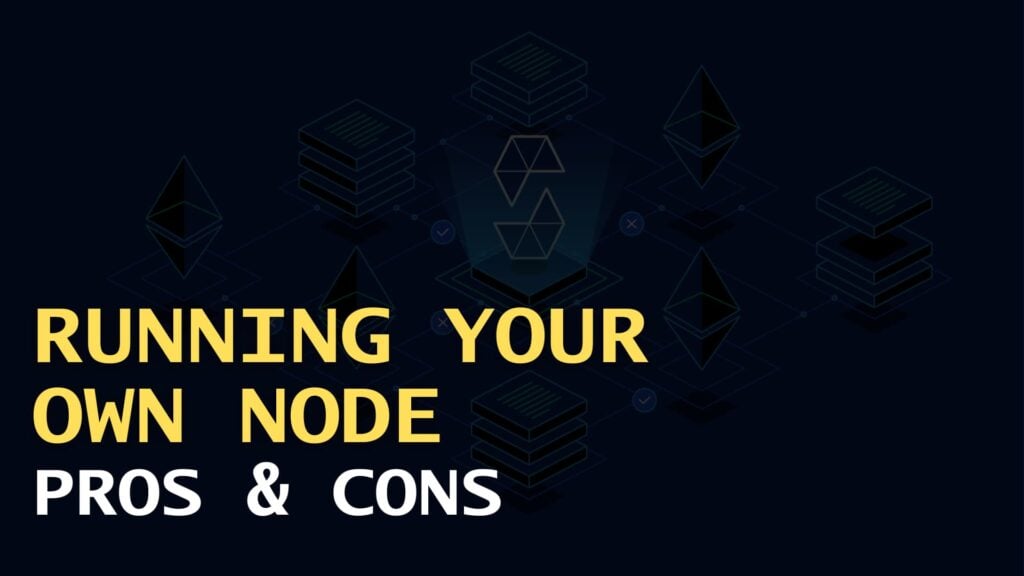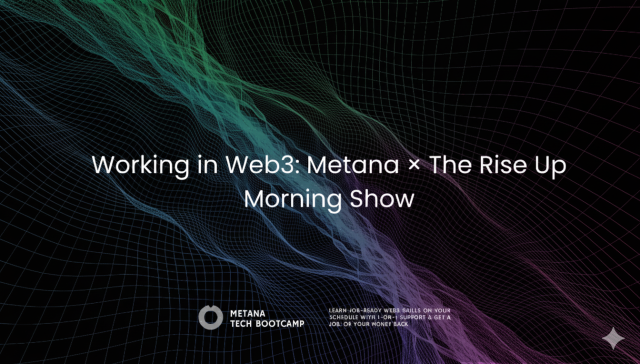TL;DR:
- Running a blockchain node allows direct interaction with the network, enhancing security and privacy by eliminating reliance on third-party services.
- Full nodes store the entire blockchain and validate every transaction, contributing to network decentralization and integrity.
- Light nodes, or SPV nodes, are resource-efficient, storing only block headers and relying on full nodes for data verification.
- Operating a node requires technical expertise, substantial storage, bandwidth, and ongoing maintenance.
- Despite the growth of blockchain, there are fewer than 10,000 Bitcoin full nodes, highlighting the need for more participants to maintain network health.
As blockchain technology continues to grow, an increasing number of businesses and individuals are exploring ways to contribute to decentralized networks. One of the most popular ways to engage with blockchain is by running your own node. A full node plays a critical role in maintaining the network. However, despite the growth and popularity of blockchain, there are fewer than 10.000 Bitcoin peers on networks running full nodes. Everyone else is still relying on other people’s full nodes to broadcast their transactions.
This article delves deep into the concept of running your own node in blockchain and explores it’s advantages and disadvantages, providing insights for developers, crypto enthusiasts, and enterprises looking to make informed decisions.
Understanding the Concept

A node is an important component of the network. It allows participants to validate transactions, maintain the blockchain’s integrity, and contribute to the overall security and decentralization of the system. Running your own node in a blockchain network means operating a software instance that connects to the blockchain and allows you to interact directly with the network.
When you run your own node, you are actively contributing to the blockchain’s operation on the network.
Nodes can be categorized into different types,
- Full nodes
- Light nodes
Full Nodes in Blockchain
Full nodes are the backbone of Bitcoin. They help keep the network decentralized, protect the protocol’s consensus rules and store the entire blockchain history and validate every transaction. As long as enough full nodes are running, anyone with a modern computer can join the network as a peer, ensuring that everyone follows Bitcoin’s rules.
Light Nodes in Blockchain
Light nodes, also known as lightweight or SPV (Simplified Payment Verification) nodes are resource-efficient alternatives of full nodes. They store only a portion of the blockchain specifically the block headers, and they rely on full nodes for certain data to conduct verifications making them much less resource-intensive in terms of storage and bandwidth.
Running your own node can lead to several advantages from the blockchain world. However, it also requires significant technical knowledge, resources and ongoing maintenance to find great success.
Pros of Running Your Own Node
Following are some of the common advantages of running your own node in blockchain networks.
1. Full Control Over Transaction
Running your own node means you have full control over the transactions made. You don’t have to trust anyone to keep the network honest, instead you do it yourself. If a transaction breaks consensus rules you are able to reject that transactions since it does not meet your criteria. This is particularly valuable for businesses and individuals who require precise control over their financial activities.
Having your own node ensures that your transactions will be broadcasted to the network. If you’re running a lightweight client, you will have to rely on someone else’s full node to do that for you.
2. Enhanced Security and privacy
Running your own node allows you to verify transactions independently, reducing reliance on third party services that might compromise your data. While running a lightweight client, you will have to rely on third party to make the transaction. In this way, the third party will have access to information about your transactions, as well as any personal data you give them as service providers.
In order to avoid this, you will have to connect directly to the bitcoin network. Full Nodes are the only way of doing that. This self-reliance increases security by ensuring that you are not exposing your private keys or transaction details to external servers.
3. Contribution to Network Decentralization
Nodes are the backbone of any blockchain network. By running your own node, you move beyond being a passive participant and take on an active role in the network’s operations. Your node enables other participants to connect to the blockchain through you, contributing directly to the network’s functionality and decentralization.
The more decentralized a network becomes, the harder it is to attack or censor, which benefits all participants. By running your own node, you provide others with a direct connection to the Bitcoin network, enabling secure and reliable transactions while strengthening the overall resilience of the network.
4. Improved Transparency
Running your own node allows you to have full control over the transactions providing you with full visibility into the blockchain’s state. You will be able to monitor transactions made through your network in real-time and audit them which is a lot beneficial for individuals and businesses who need to ensure compliance and verify the integrity of their transactions.
5. Support for Development and Experimentation
Running your own node could benefit developers who are looking forward to build and test decentralized applications in blockchain. It allows them to directly interact with the blockchain, run smart contracts, and develop features without completely relying on third-party APIs, which might provide limited functionalities or introduce latency.
Cons of Running Your Own Node
Even though running your own node can lead to several advantages, the process itself could be a lot challenging and there are chances where they could produce disadvantages as well.
1. High Resource Requirements
Running your own node can be resource-intensive. This is one of the common challenges introduced that would make the whole process hard. It requires significant storage, and bandwidth particularly for full nodes that store the entire blockchain history to validate transactions.
For instance, initial synchronization with the network requires you to download the entire Bitcoin blockchain. Bitcoin Core, the most popular Bitcoin client, requires around 200 GB of free disk space to perform this process. Additionally, Bitcoin Core’s recommended minimum bandwidth use is 5 GB/day for uploads and 500 MB/day for downloads. If you have limited bandwidth or limited storage, then running a full Bitcoin node may not be an option for you. This can be a huge barrier for individuals and businesses with limited hardware capabilities to run a node on their own.
2. Legal and Regulatory Risks
Bitcoin is illegal in some countries. So running a node could expose you to legal or regulatory scrutiny, especially in countries with unclear or evolving cryptocurrency laws. Depending on the nature of your transactions or the country in which you operate, you might face legal challenges or requirements to comply with specific regulations.
Hopefully, as cryptocurrencies become more widely accepted around the world, governments will begin to see the light and allow Bitcoin and other cryptocurrencies to realize their enormous potential to bring about great change in the world.
3. Maintenance and Upkeep
Running your own node requires significant maintenance after being set up. Nodes require regular updates, monitoring and sometimes troubleshooting to ensure they run as expected. This ongoing maintenance can be time-consuming and requires a certain level of technical knowledge.
4. Connectivity and Availability Issues
Running your own node require a stable internet connection to maintain a strong connectivity with the blockchain network. Any downtime could lead to missed transactions or unexpected delays in validating transactions. A strong bandwidth is always required to run your own node successfully.
5. Risk of Attacks
While running a node could enhance security, it could also make you a target. Malicious attackers might attempt to attack your node, and gain access to sensitive information. This is something that would lead us to heavy risk. Protecting your node from these threats require robust security measures which can be costly and a lot complexed.
Conclusion: Running a Node
There are several benefits when running your own node, especially when it comes to control, security, and decentralization. But there are drawbacks as well, such as high resource requirements, upkeep needs, and possible legal issues. It’s important to consider these advantages and disadvantages in relation to your own requirements and skills before choosing to run your own node. For developers and businesses with the necessary resources and expertise, running a node can be an empowering and valuable step toward greater autonomy and participation in the blockchain ecosystem.
Ready to Level Up Your Blockchain Skills?
Get hands-on mentorship, real projects, and career support with Metana’s Web3 Solidity Bootcamp. Start your journey to become a blockchain developer with us → View the Bootcamp
FAQs

What is a blockchain node?
- A blockchain node is a computer that participates in a blockchain network, storing and validating transactions to maintain the network’s integrity.
Why should I consider running my own blockchain node?
- Running your own node gives you greater control, increased privacy, and helps contribute to the security and decentralization of the blockchain network.
What are the hardware requirements for running a blockchain node?
- The hardware requirements vary depending on the blockchain, but generally, you need a reliable computer with sufficient processing power, storage, and a stable internet connection.
Are there any risks associated with running a blockchain node?
- Yes, running a node can expose you to security risks, require significant resources, and necessitate regular maintenance to stay updated with the network.
Can anyone run a blockchain node?
- Yes, most blockchains allow anyone to run a node, though technical knowledge and understanding of the specific blockchain are highly recommended.









